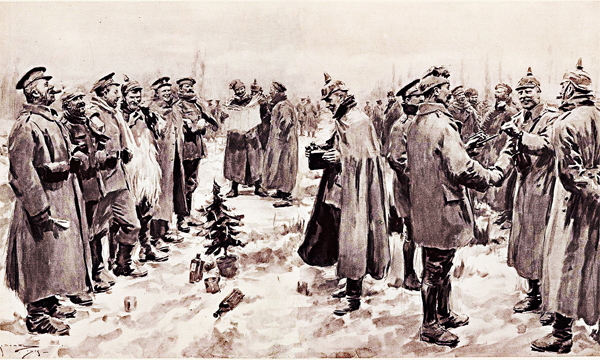
The World War I Christmas Truce on December 24-26, 1914
The World War I Christmas Truce: “Here we were laughing and chatting to men whom only a few hours before we were trying to kill!”
On Christmas Eve 1914, in the dank, muddy trenches on the Western Front of the first world war, a remarkable thing happened.
It came to be called the Christmas Truce. And it remains one of the most storied and strangest moments of the Great War - or of any war in history.
British machine gunner Bruce Bairnsfather, later a prominent cartoonist, wrote about it in his memoirs. Like most of his fellow infantrymen of the 1st Battalion of the Royal Warwickshire Regiment, he was spending the holiday eve shivering in the muck, trying to keep warm. He had spent a good part of the past few months fighting the Germans. And now, in a part of Belgium called Bois de Ploegsteert, he was crouched in a trench that stretched just three feet deep by three feet wide, his days and nights marked by an endless cycle of sleeplessness and fear, stale biscuits and cigarettes too wet to light.
“Here I was, in this horrible clay cavity”, Bairnsfather wrote, ”…miles and miles from home. Cold, wet through and covered with mud.” There didn’t “seem the slightest chance of leaving—except in an ambulance.”
Then the singing started
At about 10 p.m., Bairnsfather noticed a noise.
“I listened”, he recalled. “Away across the field, among the dark shadows beyond, I could hear the murmur of voices.” He turned to a fellow soldier in his trench and said, “Do you hear the Boches [Germans] kicking up that racket over there?”
“Yes”, came the reply. “They’ve been at it some time!”
The Germans were singing carols, as it was Christmas Eve. In the darkness, some of the British soldiers began to sing back.
“Suddenly”, Bairnsfather recalled, “we heard a confused shouting from the other side. We all stopped to listen. The shout came again.” The voice was from an enemy soldier, speaking in English with a strong German accent. He was saying, “Come over here.”
One of the British sergeants answered:
“You come half-way. I come half-way.”
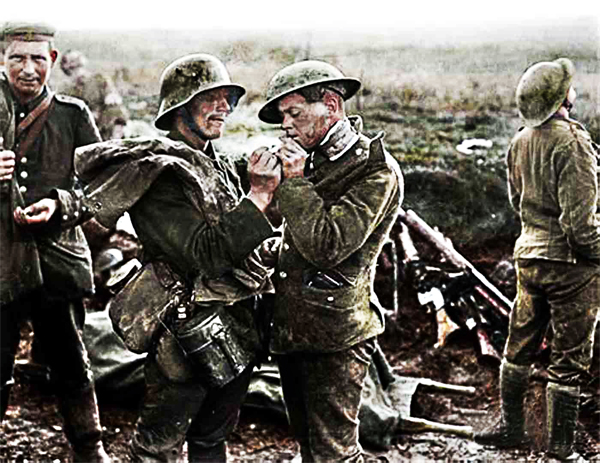
The World War I Christmas Truce on December 24-26, 1914 Continued ...
History Channel / Wikipedia / Encyclopedia Britannica /
Imperial War Museum (Great Britain) / The National Museum and Memorial.org / Mises Institute.org / Ohio History Connection.org /
Libertarian Institute.org / Smithsonian /
The World War I Christmas Truce on December 24-26, 1914 (YouTube) 
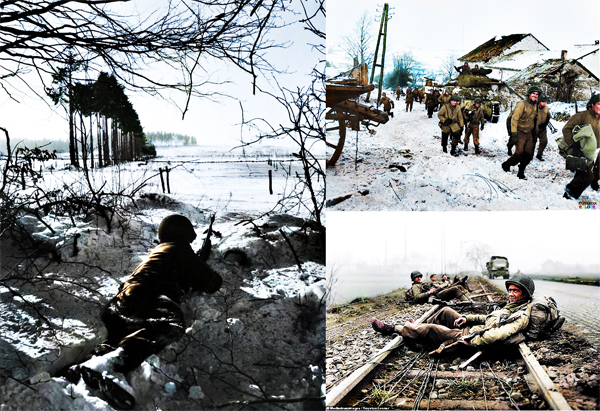
Battle of the Bulge begins on December 16, 1944
Battle of the Bulge begins: On December 16, 1944, the Germans launch the last major offensive of World War II, Operation Mist, also known as the Ardennes Offensive and the Battle of the Bulge, an attempt to push the Allied front line west from northern France to northwestern Belgium.
The Battle of the Bulge, so-called because the Germans created a “bulge” around the area of the Ardennes forest in pushing through the American defensive line, was the largest fought on the Western front.
The Germans threw 250,000 soldiers into the initial assault, 14 German infantry divisions guarded by five panzer divisions-against a mere 80,000 Americans. Their assault came in early morning at the weakest part of the Allied line, an 80-mile poorly protected stretch of hilly, woody forest (the Allies simply believed the Ardennes too difficult to traverse, and therefore an unlikely location for a German offensive). Between the vulnerability of the thin, isolated American units and the thick fog that prevented Allied air cover from discovering German movement, the Germans were able to push the Americans into retreat.
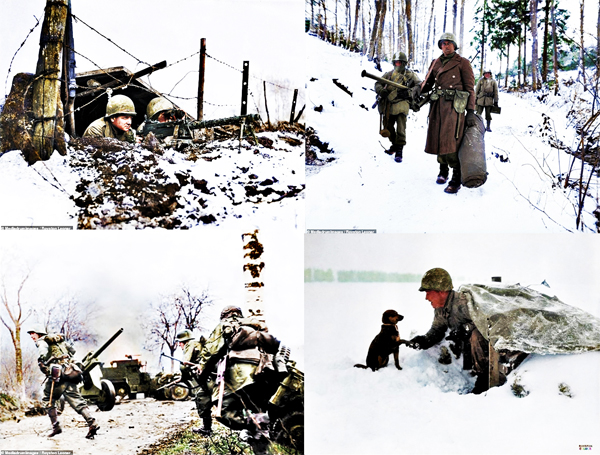
One particularly effective German trick was the use of English-speaking German commandos who infiltrated American lines and, using captured U.S. uniforms, trucks, and jeeps, impersonated U.S. military and sabotaged communications. The ploy caused widespread chaos and suspicion among the American troops as to the identity of fellow soldiers–even after the ruse was discovered. Even General Omar Bradley himself had to prove his identity three times–by answering questions about football and Betty Grable–before being allowed to pass a sentry point.
The battle raged for three weeks, resulting in a massive loss of American and civilian life. Nazi atrocities abounded, including the murder of 72 American soldiers by SS soldiers in the Ardennes town of Malmedy. Historian Stephen Ambrose estimated that by war’s end, “Of the 600,000 GIs involved, almost 20,000 were killed, another 20,000 were captured, and 40,000 were wounded.”
The United States also suffered its second-largest surrender of troops of the war: More than 7,500 members of the 106th Infantry Division capitulated at one time at Schnee Eifel. The devastating ferocity of the conflict also made desertion an issue for the American troops; General Eisenhower was forced to make an example of Private Eddie Slovik, the first American executed for desertion since the American Civil War.
The war would not end until better weather enabled American aircraft to bomb and strafe German positions.
History Channel / Wikipedia / Encyclopedia Britannica /
ARMY.mil / The National WW2 Museum.org / Imperial War Museum (Great Britain) / United States Memorial Holocaust Encyclopedia USHMM.org / Library Of Congress.gov /
Battle of the Bulge begins on December 16, 1944 (YouTube) 
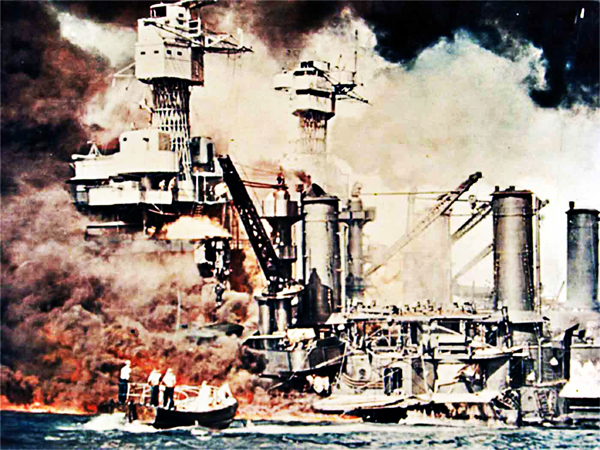
Pearl Harbor bombed on December 7, 1941
Pearl Harbor bombed At 7:55 a.m. Hawaii time, a Japanese dive bomber bearing the red symbol of the Rising Sun of Japan on its wings appears out of the clouds above the island of Oahu. A swarm of 360 Japanese warplanes followed, descending on the U.S. naval base at Pearl Harbor in a ferocious assault. The surprise attack struck a critical blow against the U.S. Pacific fleet and drew the United States irrevocably into World War II.
With diplomatic negotiations with Japan breaking down, President Franklin D. Roosevelt and his advisers knew that an imminent Japanese attack was probable, but nothing had been done to increase security at the important naval base at Pearl Harbor. It was Sunday morning, and many military personnel had been given passes to attend religious services off base. At 7:02 a.m., two radar operators spotted large groups of aircraft in flight toward the island from the north, but, with a flight of B-17s expected from the United States at the time, they were told to sound no alarm. Thus, the Japanese air assault came as a devastating surprise to the naval base.
Much of the Pacific fleet was rendered useless: Five of eight battleships, three destroyers, and seven other ships were sunk or severely damaged, and more than 200 aircraft were destroyed. A total of 2,400 Americans were killed and 1,200 were wounded, many while valiantly attempting to repulse the attack. Japan’s losses were some 30 planes, five midget submarines, and fewer than 100 men. Fortunately for the United States, all three Pacific fleet carriers were out at sea on training maneuvers. These giant aircraft carriers would have their revenge against Japan six months later at the Battle of Midway, reversing the tide against the previously invincible Japanese navy in a spectacular victory.
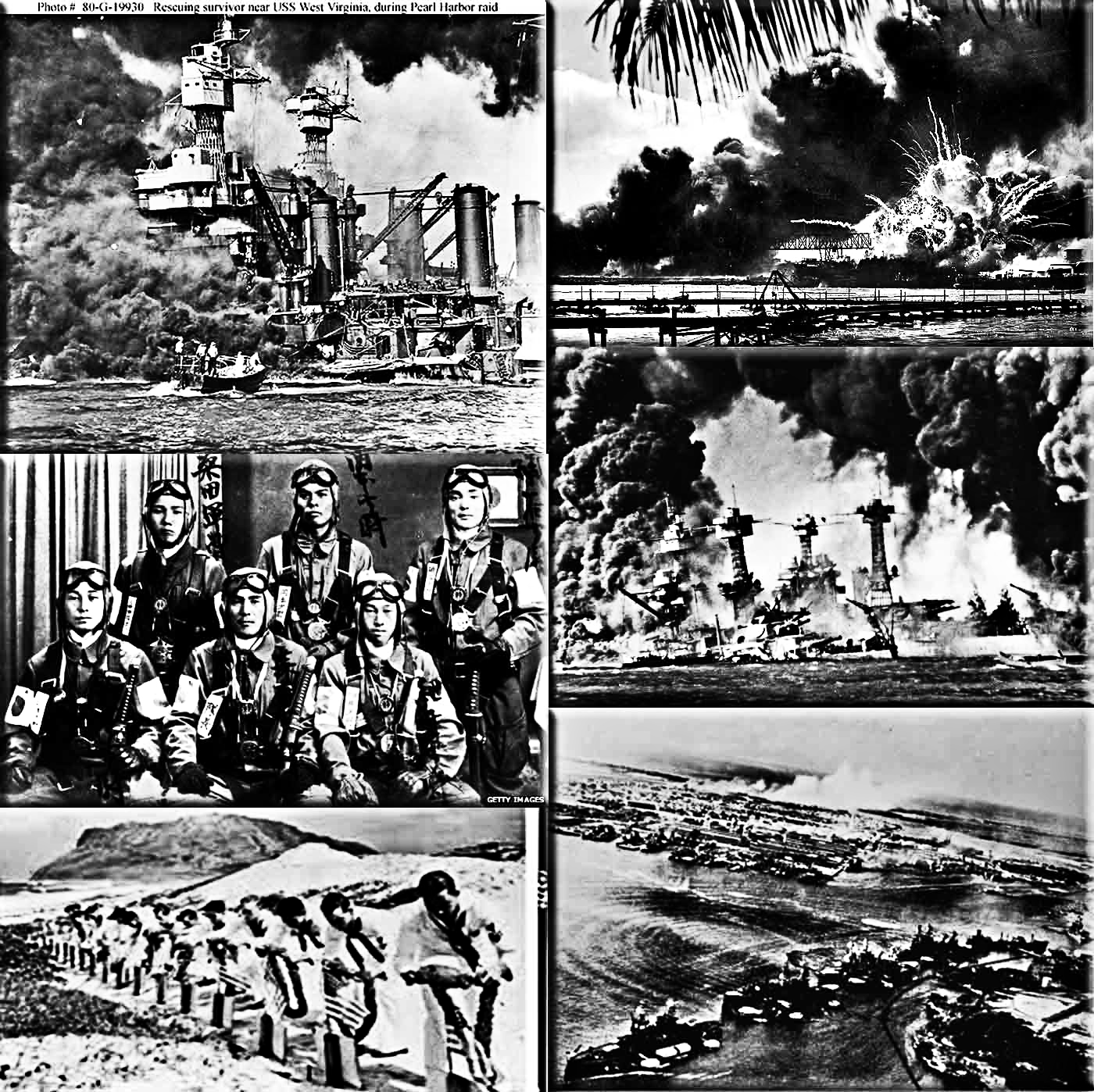
The day after Pearl Harbor was bombed, President Roosevelt appeared before a joint session of Congress and declared, “Yesterday, December 7, 1941–a date which will live in infamy–the United States of America was suddenly and deliberately attacked by naval and air forces of the Empire of Japan.”
After a brief and forceful speech, he asked Congress to approve a resolution recognizing the state of war between the United States and Japan. The Senate voted for war against Japan by 82 to 0, and the House of Representatives approved the resolution by a vote of 388 to 1. The sole dissenter was Representative Jeannette Rankin of Montana, a devout pacifist who had also cast a dissenting vote against the U.S. entrance into World War I. Three days later, Germany and Italy declared war against the United States, and the U.S. government responded in kind.
The American contribution to the successful Allied war effort spanned four long years and cost more than 400,000 American lives.
History Channel / Wikipedia / Encyclopedia Britannica / Pearl Harbor Oahu / National Park Service
/ Pearl Harbor - Dec. 7, 1941 - The only color film of the attack (YouTube)” 
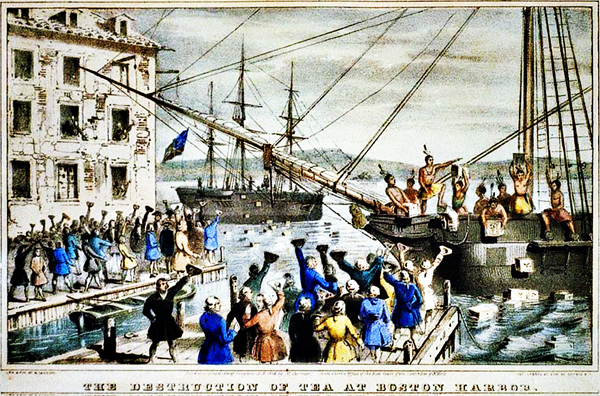
The Boston Tea Party on December 16, 1773
The Boston Tea Party: In Boston Harbor, a group of Massachusetts colonists disguised as Mohawk Indians board three British tea ships and dump 342 chests of tea into the harbor.
The midnight raid, popularly known as the “Boston Tea Party”, was in protest of the British Parliament’s Tea Act of 1773, a bill designed to save the faltering East India Company by greatly lowering its tea tax and granting it a virtual monopoly on the American tea trade. The low tax allowed the East India Company to undercut even tea smuggled into America by Dutch traders, and many colonists viewed the act as another example of taxation tyranny.
When three tea ships, the Dartmouth, the Eleanor, and the Beaver, arrived in Boston Harbor, the colonists demanded that the tea be returned to England. After Massachusetts Governor Thomas Hutchinson refused, Patriot leader Samuel Adams organized the “tea party” with about 60 members of the Sons of Liberty, his underground resistance group. The British tea dumped in Boston Harbor on the night of December 16 was valued at some $18,000.
Parliament, outraged by the blatant destruction of British property, enacted the Coercive Acts, also known as the Intolerable Acts, in 1774. The Coercive Acts closed Boston to merchant shipping, established formal British military rule in Massachusetts, made British officials immune to criminal prosecution in America, and required colonists to quarter British troops. The colonists subsequently called the first Continental Congress to consider a united American resistance to the British.
History Channel / Wikipedia / Encyclopedia Britannica /
Constitution Center.org / Boston Tea Partyship / Massachusetts Historical Society /
The Boston Tea Party on December 16, 1773 (YouTube) 
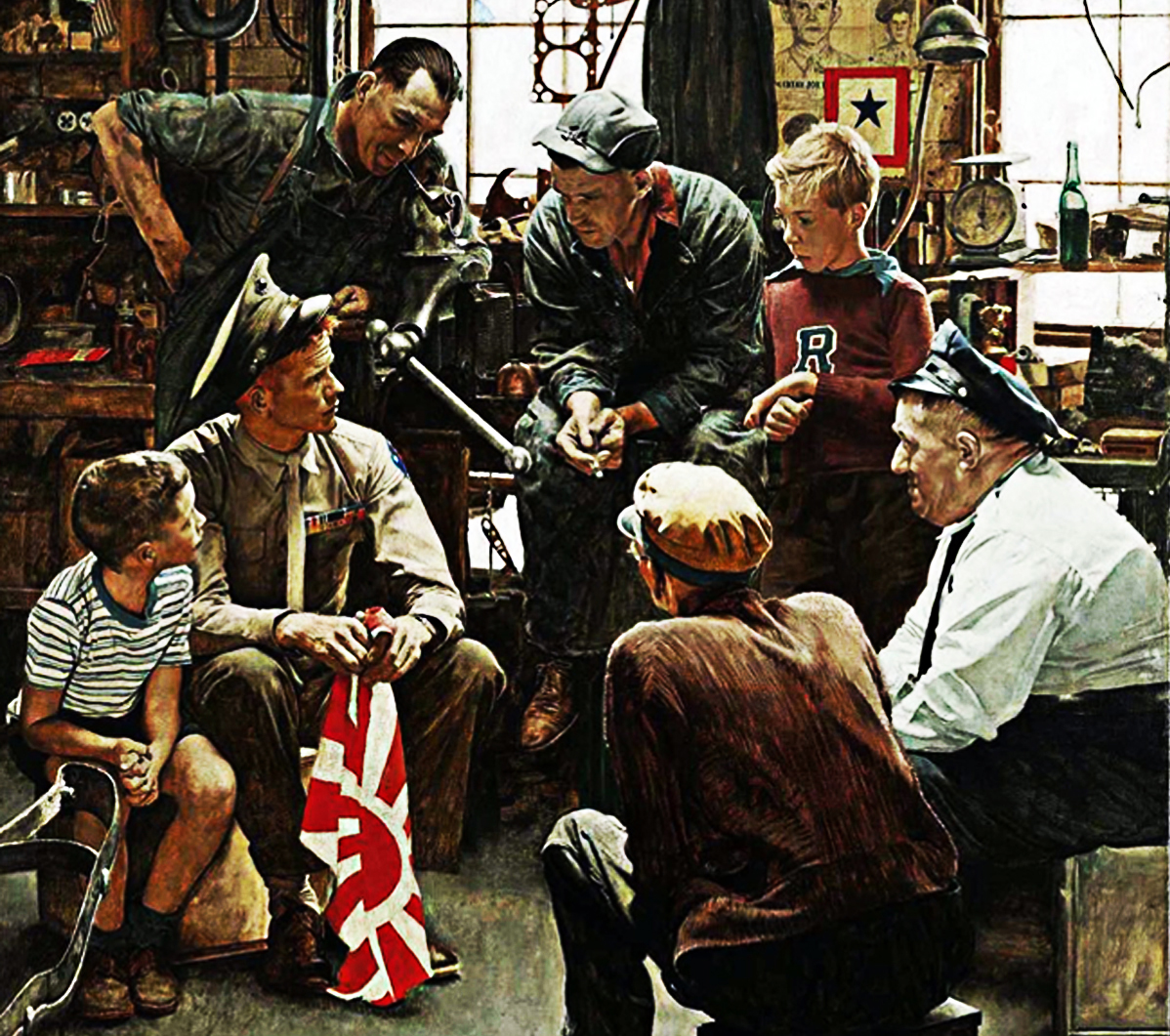
Understanding Military Terminology
Required Delivery Date
(DOD) The date that a force must arrive at the destination and complete unloading.
Also called RDD.
Joint Publications (JP 5-0) Joint Planning
Requirements Determination
(DOD) All activities necessary to develop, consolidate, coordinate, validate, approve, and prioritize joint force contract support requirement.
Joint Publications (JP 4-10) Operational Contract Support
Requirements Development
(DOD) The process of defining actual contract support requirements and capturing these requirements in acquisition ready contract support requirements packages.
Joint Publications (JP 4-10) Operational Contract Support
Requirements Management System
(DOD) A system for the management of theater and national imagery collection requirements that provides automated tools for users in support of submission, review, and validation of imagery nominations as requirements to be tasked on national or Department of Defense imagery collection, production, and exploitation resources.
Also called RMS.
See also Imagery.
Joint Publications (JP 2-01) Joint and National Intelligence Support to Military Operations
Requiring Activity
(DOD) A military or other designated supported organization that identifies and receives contracted support during military operations.
Joint Publications (JP 4-10) Operational Contract Support
Joint Publication - Department of Defense Dictionary of Military and Associated Terms
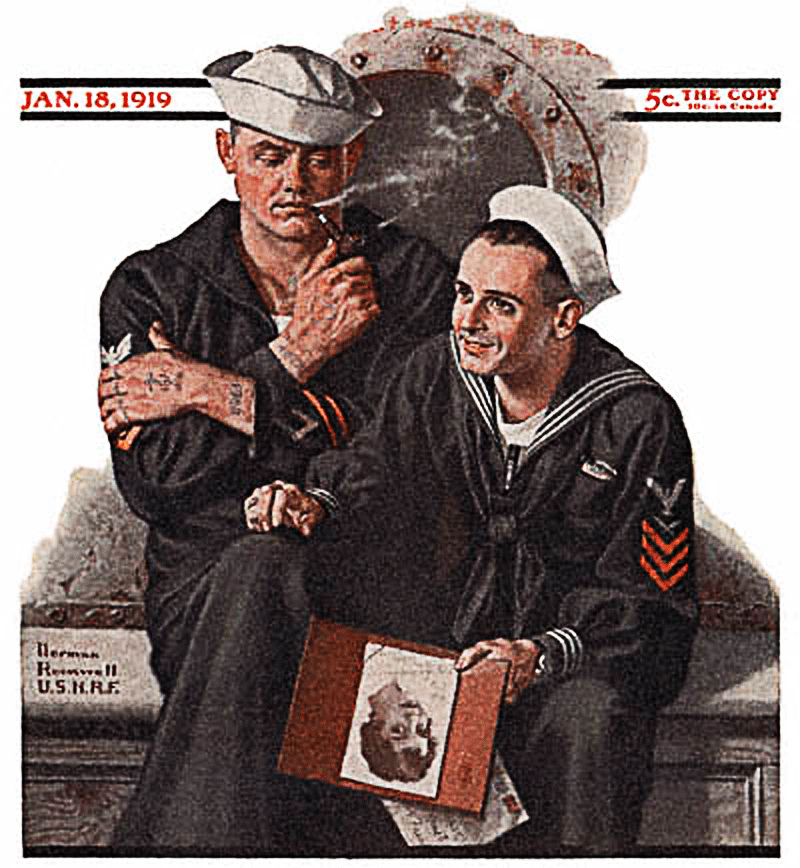
The Old Salt’s Corner

“A SUBMARINE CHRISTMAS POEM”
T'was the night before Christmas, he lived in a crowd,
In a 40 man berthing, with shipmates snoring so loud.
I had come down the Sail with presents to give,
And to see just who in this rack did live.
I looked all about, a strange sight did I see,
No tinsel, no presents, not even a tree.
No stockings were hung, just a “poopy suit” close at hand,
On the bulkhead hung pictures of a far distant land.
He had medals and badges and awards from far and wide,
But one in particular my eye did soon find.
Why, they were Dolphins, with a tiny submarine...pinned on with pride,
Then a sobering thought did come to my mind.
For this place was different, it was so dark and dreary,
I had found the home of a Sub Sailor, once I could see clearly.
The Sailor lay sleeping, silent and alone,
Curled up in his rack, dreaming of home.
The face was so gentle, the berthing in good order,
Not how I pictured a U. S. Submarine Sailor.
Was this the hero whom I saw on TV?
Defending his country so we all could be free?
I realized the families that I've seen this cold night,
Owed their lives to these Sailors who were willing to fight.
“You've got high dust and low dust, and that overhead it needs cleaning!”
Soon, 'round the world the children would play,
And grownups would celebrate a new Christmas Day.
They all enjoyed freedom each day of the year
Because of these Sailors, like the one lying here.
I couldn't help but wonder how many lay alone,
On a cold Christmas Eve, under sea, far from home.
\
The very thought made me pause and brought a tear to my eye,
I dropped to my knees and started to cry.
The Sailor awakened and I heard a gruff voice
“Santa, don't cry for me; this life is my choice.
I'll defend the seas on this day
Then on re-inspection he explained with a huff,
And let others rejoice.”
The Sailor rolled over and drifted to sleep,
I couldn't control it, I started to weep.
I kept watch then for hours, silent and still,
And we both shivered a bit from the night's aching chill.
It seemed like eternity until reveille sounded
I didn't want to leave, on that dreary, cold night,
This Guardian of Honor, so willing to fight.
Then the Sailor rolled over and with a voice soft and pure,
Whispered, “Carry on, Santa, it's Christmas Day... all's secure.”
~ Unknown

“Thought for the Day”
“He would make a lovely corpse.”
“We forge the chains we wear in life.”
“A loving heart is the truest wisdom.”
“Vices are sometimes only virtues carried to excess!”
“The pain of parting is nothing to the joy of meeting again.”
“Life is made of ever so many partings welded together.”
“It is a melancholy truth that even great men have their poor relations.”
“A day wasted on others is not wasted on one's self.”
“There is nothing so strong or safe in an emergency of life as the simple truths.”
“No one is useless in this world who lightens the burden of it to anyone else.s”
“I will honor Christmas in my heart,
and try to keep it all the year.”
“It is a far, far better thing that I do,
it is a far, far better rest that I go to,
than I have ever known.”
“Home is a name, a word,
it is a strong one;
stronger than magician ever spoke,
or spirit ever answered to,
in the strongest conjuration.”
~ Charles Dickens
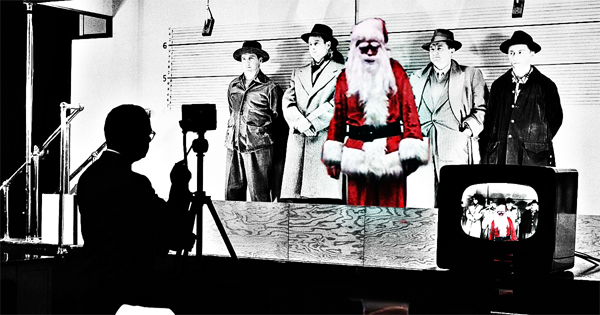
Mr. Answer Man Please Tell Us: Santa Claus Bank Robbery on December 23, 1927
Santa Claus Bank Robbery: At the time it occurred, the Santa Claus Bank Robbery was one of Texas' most infamous crimes and led to the largest manhunt ever seen in the state. It all began on December 23, 1927, around noon when Marshall Ratliff, Henry Helms, Robert Hill, all ex-cons, and Louis Davis, a relative of Helms, held up the First National Bank in Cisco.
Ratliff had been caught with his brother Lee after robbing a bank in Valera, and they had each served only a year of their sentences before being pardoned by Governor Miriam A. Ferguson. They had planned to rob the Cisco bank together, but Lee had already been arrested again.
So Marshall pulled in Helms and Hill, whom he knew from Huntsville, and a fourth man who was good with safes. As they planned the crime in Wichita Falls, the safe-cracker came down with the flu, and the trio pulled in Davis, a family man in need, with the offer of big money.
The four stole a car in Wichita Falls and headed for Cisco. They arrived on the morning of December 23 and prepared to make themselves some easy money, or so they thought.
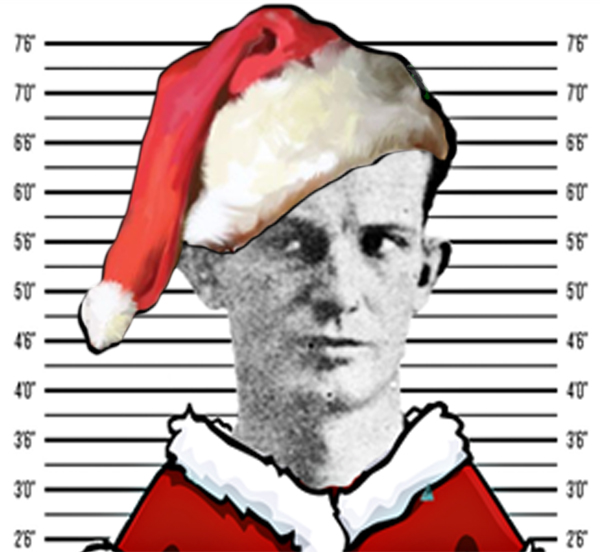
During this period three or four Texas banks a day were being robbed, and in response, the Texas Bankers Association had offered a $5,000 reward to anyone shooting a bank robber during the crime. It was partly this reward that turned a simple bank robbery into a deadly crime.
As the group neared the bank, Ratliff donned a Santa Claus suit he had borrowed from Mrs. Midge Tellet, who ran the boarding house where they had been staying in Wichita Falls. They let Ratliff out several blocks from the bank.
Followed by children attracted to “Santa”, Ratliff joined the other three in an alley and led the way into the bank.
Santa Claus Bank Robbery on December 23, 1927 Continued ...
Texas State Historical Association
• The Texan
• Mental Floss
• Wikipedia
• Santa Claus Bank Robbery on December 23, 1927 (YouTube Search) 
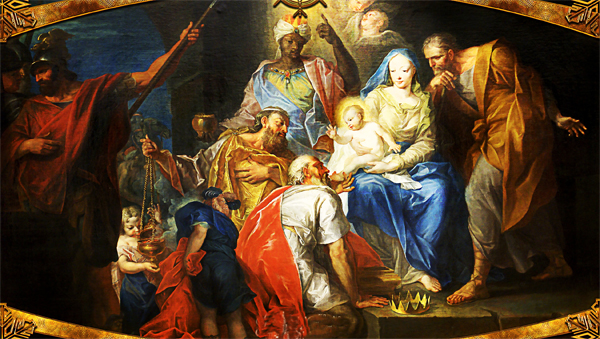
Mr. Answer Man Please Tell Us: The Origins of Christmas
Christmas is both a sacred religious holiday and a worldwide cultural and commercial phenomenon. For two millennia, people around the world have been observing it with traditions and practices that are both religious and secular in nature. Christians celebrate Christmas Day as the anniversary of the birth of Jesus of Nazareth, a spiritual leader whose teachings form the basis of their religion. Popular customs include exchanging gifts, decorating Christmas trees, attending church, sharing meals with family and friends and, of course, waiting for Santa Claus to arrive. December 25 - Christmas Day - has been a federal holiday in the United States since 1870.
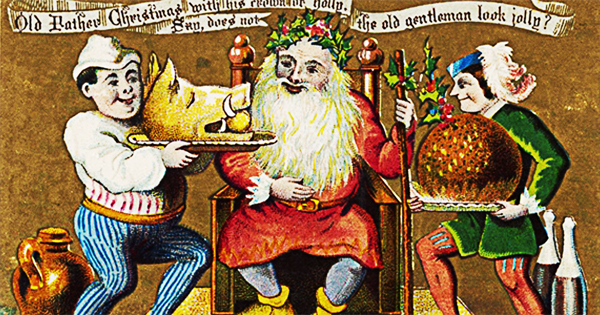
An Ancient Holiday
The middle of winter has long been a time of celebration around the world. Centuries before the arrival of the man called Jesus, early Europeans celebrated light and birth in the darkest days of winter. Many peoples rejoiced during the winter solstice, when the worst of the winter was behind them and they could look forward to longer days and extended hours of sunlight.
In Scandinavia, the Norse celebrated Yule from December 21, the winter solstice, through January. In recognition of the return of the sun, fathers and sons would bring home large logs, which they would set on fire. The people would feast until the log burned out, which could take as many as 12 days. The Norse believed that each spark from the fire represented a new pig or calf that would be born during the coming year.
The end of December was a perfect time for celebration in most areas of Europe. At that time of year, most cattle were slaughtered so they would not have to be fed during the winter. For many, it was the only time of year when they had a supply of fresh meat. In addition, most wine and beer made during the year was finally fermented and ready for drinking.
In Germany, people honored the pagan god Oden during the mid-winter holiday. Germans were terrified of Oden, as they believed he made nocturnal flights through the sky to observe his people, and then decide who would prosper or perish. Because of his presence, many people chose to stay inside.
Continued ...
History Channel / Wikipedia / Encyclopedia Britannica /
History Cooperative.org / Got Questions.org / Live Science / Mental Floss / Quora /
The Origins of Christmas (YouTube) 

NAVSPEAK aka U.S. Navy Slang
B1RD: Pronounced: Bravo One Romeo Delta. Nomenclature used to identify a bird to boot sailors. Similar to CGU-11.
Baby Beater: A small sledge hammer.
Baby Birdfarm: A helicopter carrier/amphibious assault ship.
Baby Killer: An obscenely large wrench/screwdriver.
Baboon Ass: Corned beef. The nickname is based on its color and flavor. See also Monkey Butt.
Back Alley: Card game of trump played by 2 to 4 players (mostly “snipes”).
Players are first dealt 1 card each then 2-3-4-5-6-7-8-9-10-11-12-13, 13-12-11-10-9-8-7-6-5-4-3-2-1. Players bid on the number of tricks to be taken, trump is determined by draw. Score is kept by awarding 3 points for bids made and taken and 1 point for each additional trick. A player unable to make their bid goes set 3 X the bid. Game can be played by partners.
Bag (noun): Flight suit.
Bag( verb): To issue demerits at the Naval Academy.
Bag It: Hit the bricks, take off. “Liberty is down.” "“Let's bag it.”
Bag of Dicks: An unwanted or extremely tedious task, e.g. one that is given one hour before shift change and will require at least 3 hours to complete. Someone who has been given a “Bag of Dicks” has been “bagged”, which is quite similar to getting “sand bagged”.
Bag Nasty: A pre-packaged bag lunch usually consisting of a cold cut sandwich, piece of fruit, and juice box or can of soda. Served at galleys in lieu of regular chow for sailors on the go.
Bagger: A sailor who is chronically late for watch relief. Also known as a “shit bag”.
Wiktionary.org

Just for you MARINE
Back on the Block: Behaving like a civilian.
BAH: (a.k.a. “Bee Ay Aych”) Basic Allowance for Housing Supplemental pay for living off-base; previously known as Basic Allowance for Quarters (BAQ).
Wikipedia.org

Naval Aviation Squadron Nicknames
Electronic Attack Squadron 131 (VAQ-131) - nicknamed the “Lancers”
United States Navy - Naval Air Station Whidbey Island, in Puget Sound, Washington. (Squadron Lineage: USNR squadron VP-931 was activated on 2 Sep 1950 for participation in the Korean War)
List of United States Navy aircraft squadrons - Wikipedia.org

Where Did That Saying Come From?
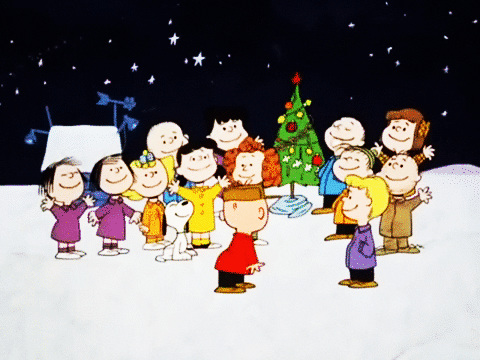
“Where Did The Term Come From? “XMas”:” Meaning: The term “XMAS” doesn't actually take the Christ out of Christmas, experts say
Christmas is also known on paper as XMAS. But some people just don't agree with the spelling of the holiday.
They believe it takes the Christ out of Christmas, saying it's a modern and disrespectful abbreviation that focuses on the commercialization of this Christian holiday.
While some people may still take offense, it's actually not true.
The use of XMas is nearly as old as Christianity itself.
Origin: The origins lie in the Greek language and alphabet. The letter that looks like an X is the Greek letter Chi which is the first letter of the Greek word for Christ.
Most scholars agree the abbreviation was used as early as the year 1021.
It can also verify that the actual word “Christmas” is already shorthand for “Christ's mass”, which is the church service that celebrated the birth of Jesus.
The “X” comes from the Greek letter “Chi”, which is the first letter of the Greek word “Christós” (Greek: Χριστός, translit. “Khristós”, lit. “anointed, covered in oil”), which became “Christ” in English.
The suffix “-mas” is from the Latin-derived Old English word for Mass.
Early Use Of Xmas includes:
● Around 1100 the term “XMas” was written as “Xp̄es mæsse” in the Anglo-Saxon Chronicle.
● “X'temmas”, dates to 1551.
● “Xmas” is found in a letter from George Woodward in 1753.
● Bernard Ward's History of St. Edmund's college, Old Hall (originally published c. 1755).
● Samuel Coleridge used the term in (1801), as did Lord Byron (1811), and Lewis Carroll (1864).
● In the United States, the fifth American edition of William Perry's Royal Standard English Dictionary, published in Boston in 1800, included in its list of “Explanations of Common Abbreviations, or Contraction of Words” the entry: “Xmas. Christmas.”
● Oliver Wendell Holmes Jr. used the term in a letter dated 1923.
THV11, Wikipedia

Science & Technology

FEATURE: Giant planets cast a deadly pall: How they can prevent life in other solar systems
• Can female fertility survive harsh cancer therapy? Scientists who turned to animal models say the answer is “yes”
NASA X-ray telescopes reveal the 'bones' of a ghostly cosmic hand
• Strong evidence for new light isotope of nitrogen
• Study uncovers hundred-year lifespans for three freshwater fish species in the Arizona desert
How a single synapse transmits both visual and subconscious information to the brain of fruit flies
• Scientists isolate “pre-emerging” bat coronavirus but also identify existing medication that potently neutralizes it
• Trial of Chinese medicine compound Tongxinluo shows intriguing results with unclear active ingredients
Researchers use AI to make mobile networks more efficient
• Antibiotics for common childhood infections no longer effective in many parts of the world, finds study
• Engineers develop an efficient process to make fuel from carbon dioxide
Phys.org / MedicalXpress / TechXplore

FEATURE: NASA X-ray telescopes reveal the “bones” of a ghostly cosmic hand
• Clear holographic imaging in turbulent environments
Amazon deforestation linked to long distance climate warming
• Researchers reveal how common desert shrub efficiently harvests water from the air
• Asteroid dust caused 15-year winter that killed dinosaurs: study
How a single synapse transmits both visual and subconscious information to the brain of fruit flies
• Hearing bad grammar results in physical signs of stress, new study reveals
• Discovery unlocks potential new arsenal to target leukemia and other cancers
Playing professional football may shorten players' lives
• Soy expansion in Brazil linked to increase in childhood leukemia deaths
• The brain may learn about the world the same way some computational models do
Phys.org / MedicalXpress / TechXplore


SONG FACTS
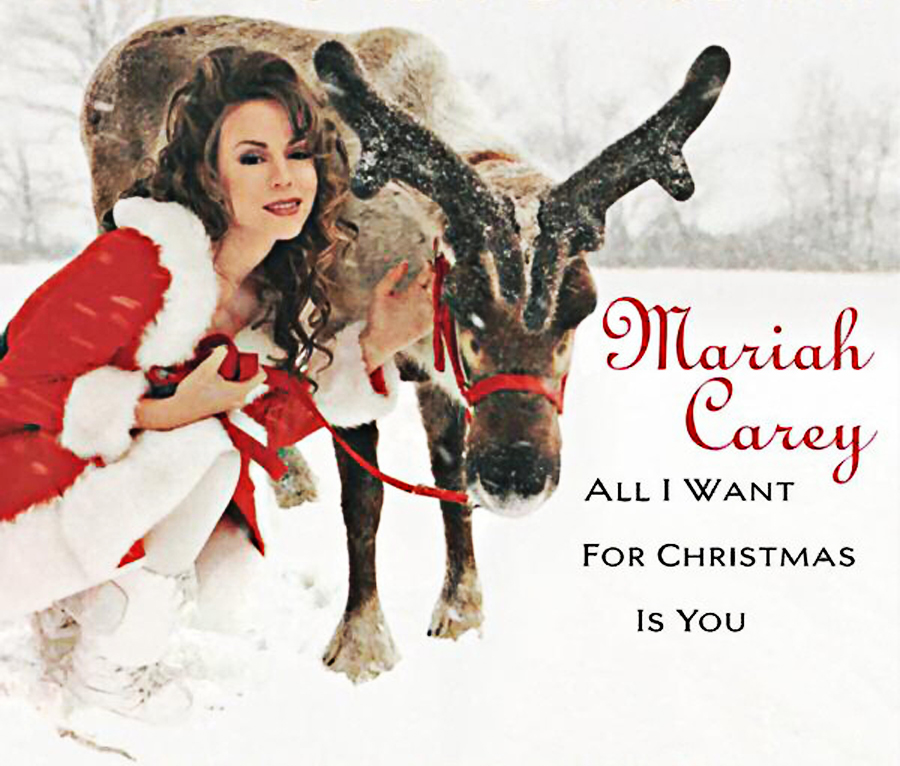
“All I Want For Christmas Is You”  - Mariah Carey
- Mariah Carey
Album: Merry Christmas
Released 1994 
“All I Want For Christmas Is You”  Motown-flavored song has a simple message:
Motown-flavored song has a simple message:
Mariah Carey is not concerned about all the paraphernalia of Christmas - she just wants to be with her man.
This was co-written and co-produced by Carey and Walter Afanasieff, who started off as Whitney Houston's arranger and has co-produced and co-written many of Carey's hits, including
“One Sweet Day”  and
“Hero”
and
“Hero”  . He also won a 1999 Grammy award for co-producing Celine Dion's
“My Heart Will Go On”
. He also won a 1999 Grammy award for co-producing Celine Dion's
“My Heart Will Go On”  .
.
Carey and Afanasieff wrote it in the summer of 1994, with him coming up with musical ideas on a piano while she developed the melody and lyrics. They set out to write an uptempo Christmas track in the style of Phil Spector's girl group productions of the '60s (Darlene Love's
“Christmas (Baby Please Come Home)”  comes to mind). They achieved their goal, creating a very fun and memorable song, although Afanasieff worried it was too basic.
comes to mind). They achieved their goal, creating a very fun and memorable song, although Afanasieff worried it was too basic.
Afanasieff told American Society of Composers, Authors and Publishers (ASCAP) in 2014:
“It's a very simple arrangement. In fact, it's so simple that at the time I thought it was overly simple and I really didn't like it. Music people know: “bah bah bah bah bah bah bah bah’... it's almost a practice interval. So, keeping that tradition and then the oversimplified melody I guess made it so easily palatable for the whole world to go, “Oh, I can't get that out of my head’.”
In terms of airplay (at least in America), this is by far the most successful Christmas song written after 1963, when Bing Crosby recorded
“Do You Hear What I Hear?”  . The most popular holiday songs on American radio were all written between 1934-1963, with
“Sleigh Ride”
. The most popular holiday songs on American radio were all written between 1934-1963, with
“Sleigh Ride”  (1948), usually the most-played.
(1948), usually the most-played.
“All I Want For Christmas Is You” - Mariah Carey 1994) Continued ...
MORE SONGS
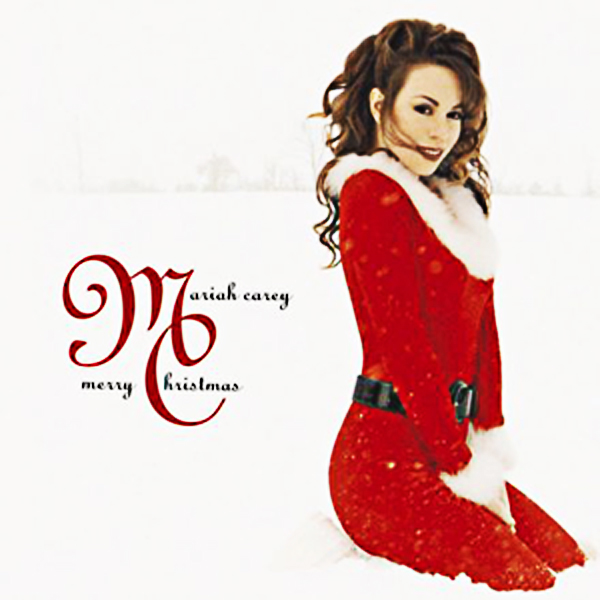
Mariah Carey, “Merry Christmas (Mariah Carey album)” (1994) 

Brenda Lee, “Rockin' Around the Christmas Tree” (1958) 
Bobby Helms, “Jingle Bell Rock” (1957) 
Burl Ives, “A Holly Jolly Christmas” (1965) 
Andy Williams, “It's the Most Wonderful Time of the Year” (1963) 
José Feliciano, “Feliz Navidad” (1970) 
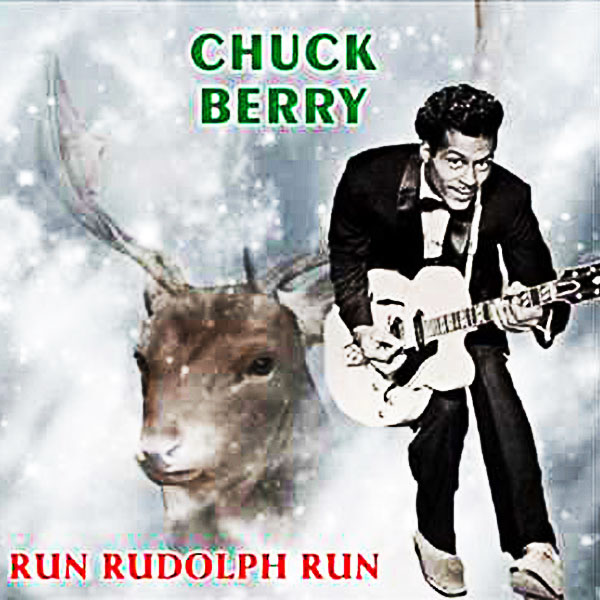
Chuck Berry, “Run Rudolph Run” (1958) 
Dean Martin, “Let It Snow, Let It Snow, Let It Snow” (1945 / 1966) 
Wham!, “Last Christmas” (1984) 
Nat King Cole, “The Christmas Song (Merry Christmas to You)” (1945 / 1946) 
Kelly Clarkson, “Underneath the Tree” (2013) 
“All I Want For Christmas Is You” - Mariah Carey 1994) Continued ...
Mariah Carey official site (Mariah Carey Discography) / Rock & Roll Hall of Fame / Billboard / All Music / Song Facts /
Ultimate Classic Rock / Mariah Carey
Image: “Merry Christmas (album)” by Mariah Carey
CHRISTMAS MOVIES
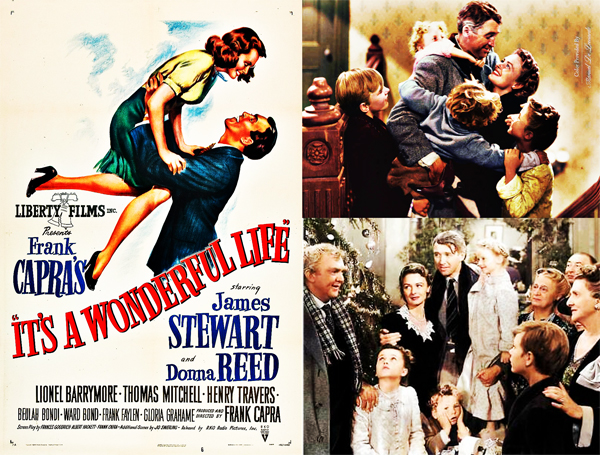
“Every Time a Bell Rings an Angel Gets His Wings:”  An angel is sent from Heaven to help a desperately frustrated businessman by showing him what life would have been like if he had never existed.
An angel is sent from Heaven to help a desperately frustrated businessman by showing him what life would have been like if he had never existed.
It's a Wonderful Life is a 1946 American Christmas fantasy drama film produced and directed by Frank Capra. Based on the short story and booklet “The Greatest Gift”, which Philip Van Doren Stern self-published in 1943, and is in turn loosely based on the 1843 Charles Dickens novell “A Christmas Carol”.
The film stars James Stewart as George Bailey, a man who has given up his personal dreams, in order to help others in his community, and whose thoughts of suicide on Christmas Eve brings about the intervention of his guardian angel, Clarence Odbody (Henry Travers).
Clarence shows George how he has touched the lives of others and how different life would be for his wife Mary (Donna Reed). and his community of Bedford Falls if he had not been born.
Christmas Movies Continued ...
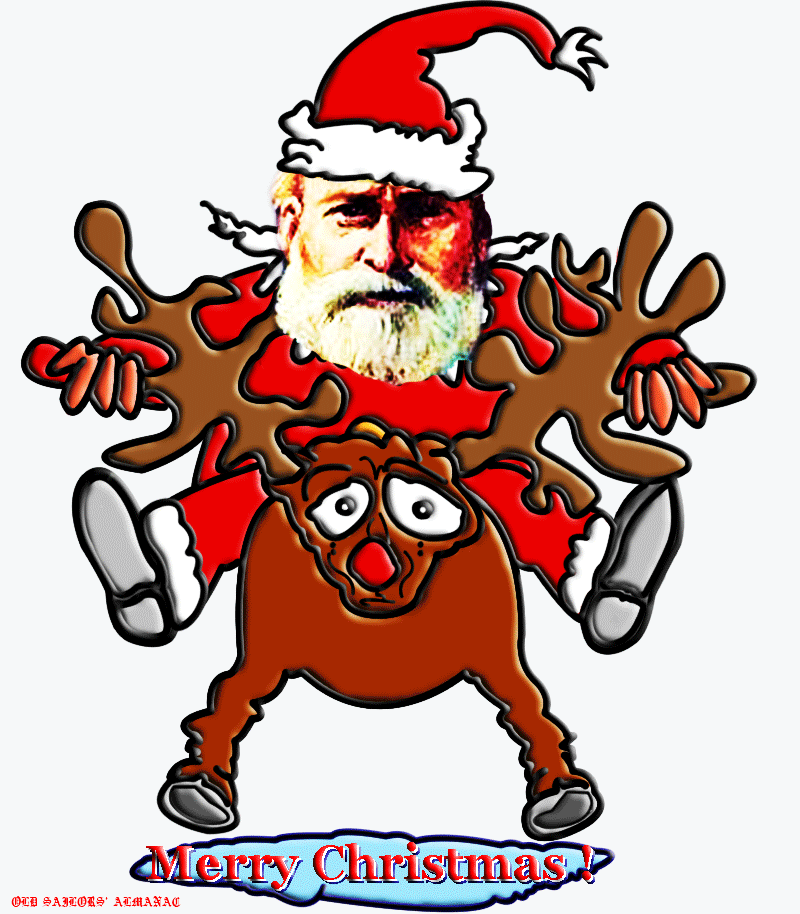
Trivia
Eight (no Rudolph!) reindeer are featured in the poem “Twas the Night Before Christmas?”
A Charlie Brown Christmas: In dictating a letter to Santa, Sally ultimately asks Santa for one gift - “Just send money. How about tens and twenties?”.
In the early 1800s, the first gingerbread houses were reportedly inspired by the famous fairy tale “Hansel and Gretel”.
Coca-Cola has been using Santa Claus in its advertising since 1931.
The Nutcracker a Christmas-themed ballet premiered in Saint Petersburg, Russia in 1892.
The Christmas edible Fruitcake is known for its long shelf life.
● What Christian group banned Christmas in Boston from 1659 to 1681?
Answer to Trivia
● Before becoming associated with Christmas what was Yule?
Answer to Trivia
● What Roman holiday held from December 17th to the 23rd had a large influence on how Christmas was celebrated?
Answer to Trivia
● Among Christians who lived in the East, when was Christmas originally celebrated?
Answer to Trivia
● In what century was the first written use of Xmas?
Answer to Trivia
● The modern Santa Claus is mainly a mix of what two figures?
Answer to Trivia
● What political cartoonist is largely responsible for defining what the modern Santa Claus looks like?
Answer to Trivia

Joke of the Day
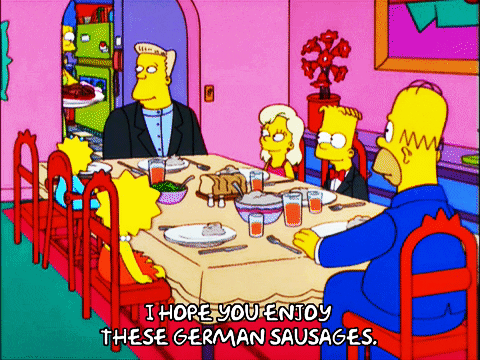
A Family Is At The Dinner Table.
The son asks the father, “Dad, how many kinds of boobs are there?”
The father, surprised, answers, “Well, son, a woman goes through three phases.”
“In her 20s, a woman’s breasts are like melons, round and firm.”
“In her 30s and 40s, they are like pears, still nice, hanging a bit.”
“After 50, they are like onions.”
“Onions?” the son asks.
“Yes.“ the father replies, “You see them and they make you cry.”
This infuriated his wife and daughter.
The daughter asks the mother, “Mom, how many different kinds of willies are there?”
The mother smiles and says, “Well dear, a man goes through three phases also.”
“In his 20s, his willy is like an oak tree, mighty and hard.”
“In his 30s and 40s, it’s like a birch, flexible but reliable.”
“After 50, After his 50s, it’s like a Christmas tree.”
“A Christmas tree?” the daughter asks.
“Yes.“ the mother replies, “Dead from the root up and the balls are just for decoration.”

































